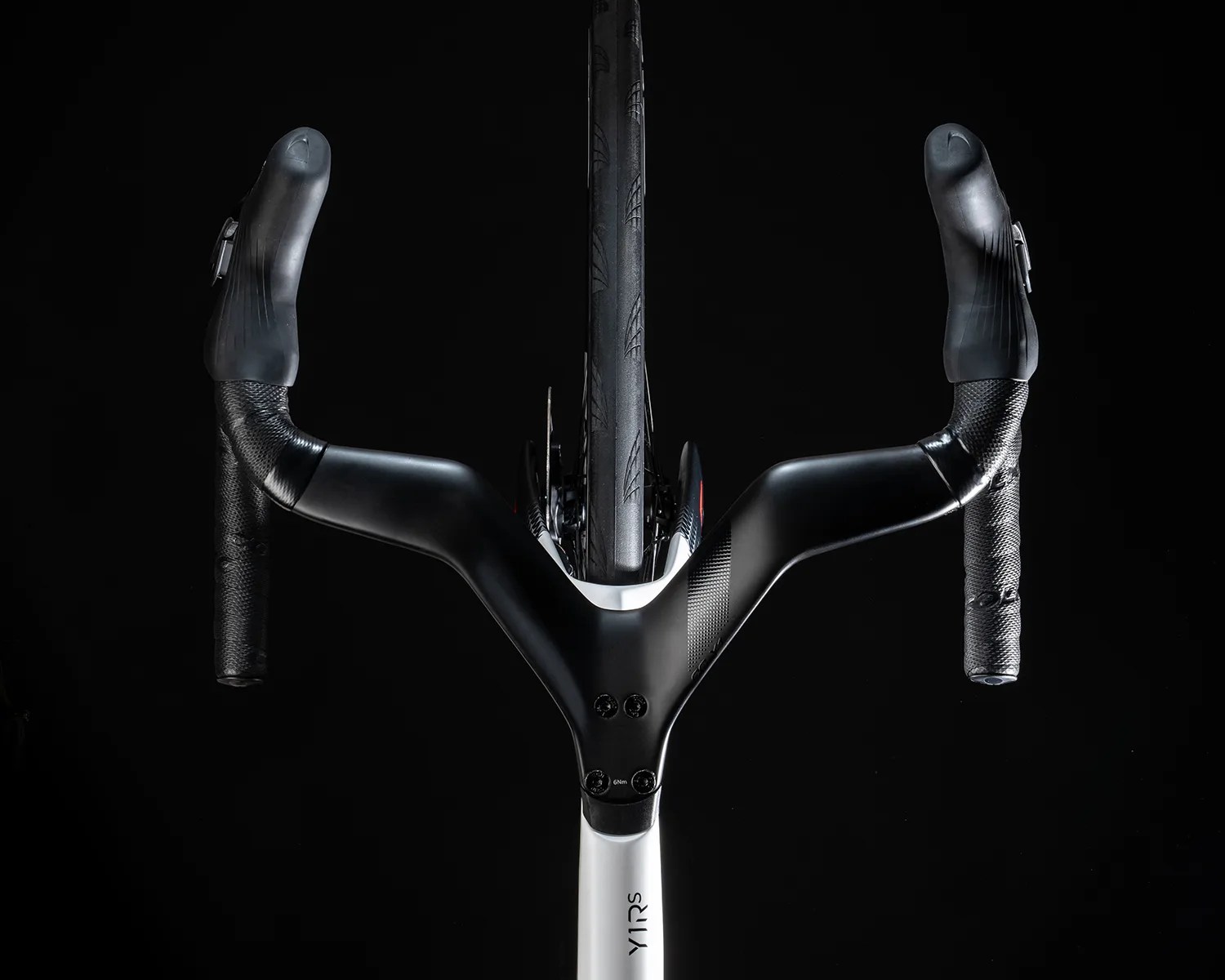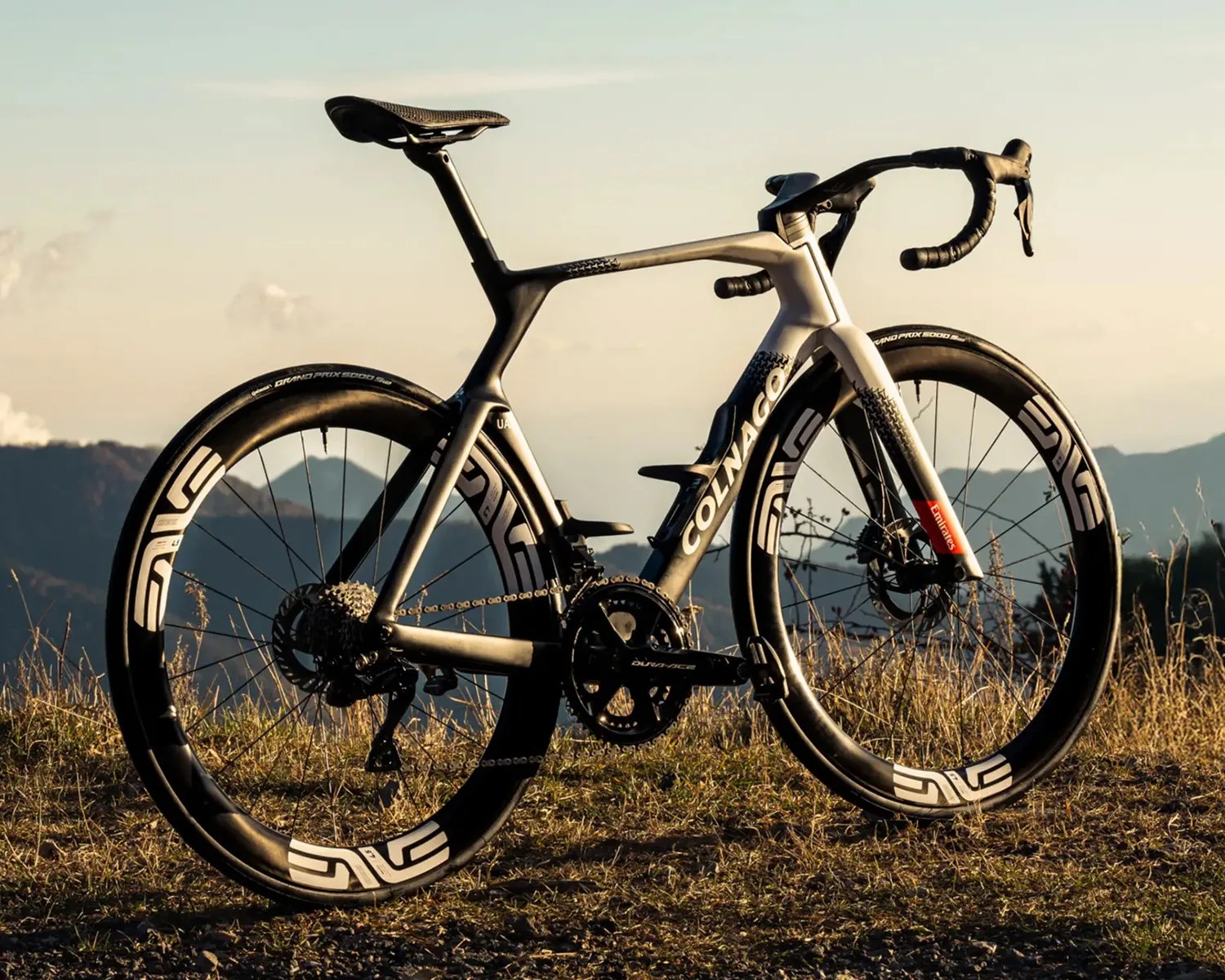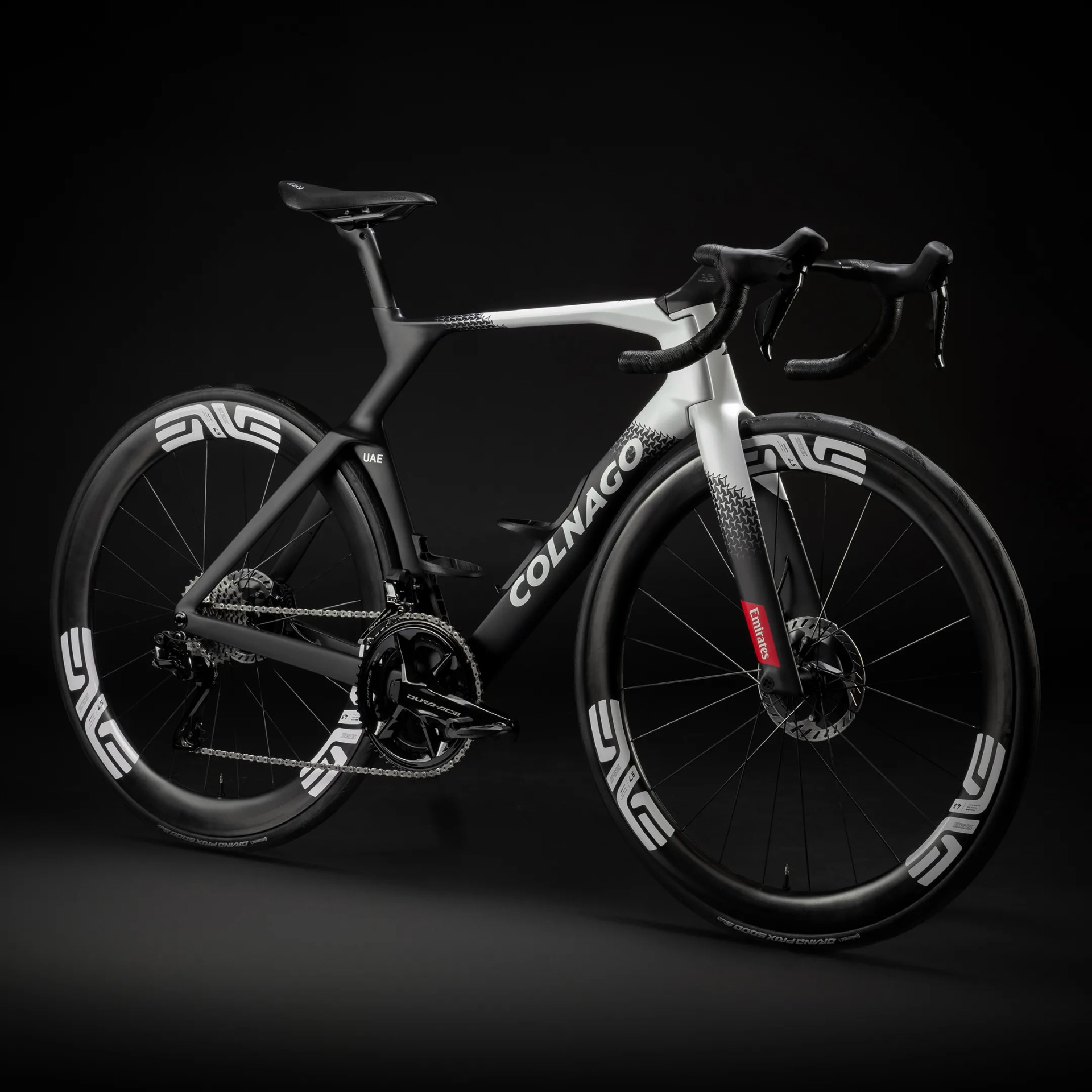Generally speaking, there are two ways to make a bike faster. You can make it lighter, or you can make it more aerodynamic.
The former approach has its limits — not only practical but legal, at least for pro racers competing under the watchful eye of Union Cycliste Internationale (UCI), the world governing body for cycling. States the UCI Technical Handbook: ‘The weight of the bicycle cannot be less than 6.8 kilograms’ or 14.99 pounds.
This approach, which moves the “wings” away from the body, enables faster and cleaner airflows around the bike. It also reduces the frontal area by 19% (compared to Colnago’s vaunted V4Rs).
The latter logically has its limits too, but perhaps no one is pushing them more than Colnago, which just rolled out the Y1Rs, which the Italian brand hails as “a bicycle engineered to redefine aerodynamics in professional cycling.” (It also happens to comply with the newest UCI standards, of course.)
Backing ambition up with science, Colnago developed the Y1Rs using advanced Computational Fluid Dynamics, rapid 3D-printed prototypes and extensive wind tunnel testing, in collaboration with Politecnico di Milano and Khalifa University.
While it boasts a number of innovations aimed at optimizing the efficiency with which it cuts through the air, one stands out above all else: those absolutely eye-popping handlebars.







